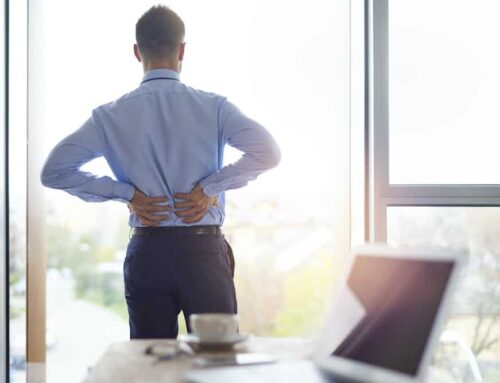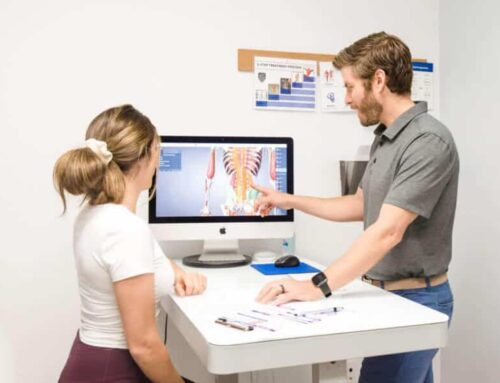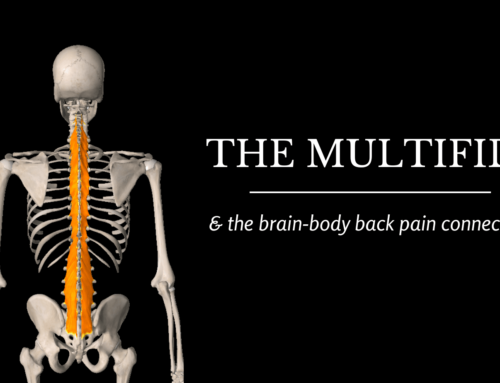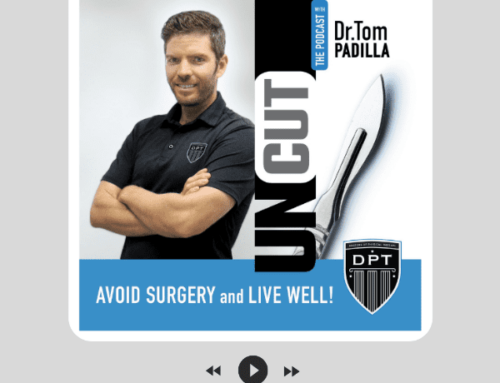Back pain is among the most common and debilitating conditions for adults globally, but it’s often poorly understood. While your back pain may feel difficult to live with at times, there are several strategies you can use to help you better manage your back pain and stay active year after year.
To help you feel great, perform your best, and enjoy your favorite activities, it’s important to understand the basics. In this article we’ll talk about the causes of back pain, key strategies to get relief from your back pain, and how working with an expert can help you get the results that matter to you most. Let’s get started!
What Causes Back Pain?
Although back pain is a very complicated problem that tends to present differently between individuals, there are a few common causes of back pain that stand out. Let’s break them down individually.
Injuries
There are many different types of injuries that can lead to back pain, and they can vary in severity. Some examples that you may be familiar with are muscle strains, disc herniations, or simply trauma from a fall or other accident.
When your body experiences a new injury, inflammation increases in the area around the injury. While inflammation is an important and natural part of your body’s healing process, large increases in inflammation can irritate the nerve endings in your back, causing pain. This inflammation typically dissipates over the course of a few days or weeks, depending on the injury.
Sedentary Lifestyle
Although your body is built to move, many of us stay in the same position for hours at a time without movement, usually because of our work. Unfortunately, bouts of sitting or standing without changing your position regularly can lead to back pain, stiffness, and other problems.
The main reason these issues happen is because regular movement is important for blood circulation, joint lubrication, and clearing waste or inflammation from the tissues of your back. Without regular movement, the joints and muscles of your back are subject to uneven stress and, eventually, irritation.
The Top 5 Back Pain Relief Strategies
Now that we’ve talked a little bit about common causes of back pain, let’s dive into the top 5 strategies that you can use to get relief from your back pain and prevent it from happening in the future. It’s important to know that any techniques without an analysis of the root cause will at best result in temporary relief. If you’ve struggled with back pain, these tips will help, and in the case they don’t you may need more specialized solutions.
Watching Your Posture and Body Mechanics
How you position and move yourself can have a big impact on your back pain. The term posture refers to the position of your body at rest, while the term body mechanics describes the way that you position yourself during different movements. Let’s talk about a few tips to make the most of both:
When it comes to posture, try to spend most of your time in a relaxed, symmetrical position whenever possible. Whether you’re sitting or standing, try to stay upright and align your shoulders over your hips to help prevent stress from slouching or arching your back. For even better results, try to avoid leaning your weight to one side if you can. If you’re using a desk, make sure that your equipment is arranged ergonomically and helps you maintain these positions throughout your day.
Body mechanics come into play during lifting for most people, so it’s important to lift properly. While lifting something up, try to maintain a straight line with your back and limit slouching or arching. For additional back support, try gently engaging your abdominal muscles as you lift. In most cases, you’ll also want to keep what you’re lifting as close to you as you can to reduce the stress on your back.
Taking Activity Breaks
Even though your body is built to move, there are many distractions in everyday life that might prevent you from getting regular physical activity. Things like work, driving, and TV shows can make several hours pass by without changing positions or walking. For some people, this can lead to back pain, soreness and stiffness that can also irritate other back conditions.
To help prevent these problems, it’s important to incorporate activity breaks into your daily schedule. As a general rule, try to get up and move around every hour. This can look like a few laps around the house, or a walk around the block. If you have trouble keeping track of the time, try setting a timer on your phone to help keep your activity breaks on track.
If you can’t get up and walk around regularly, perform a few of your favorite seated exercises while sitting in your chair. This can look like pumping your ankles, moving your hips in a circle, or stretching the muscles of your back. Something is always better than nothing!
Changing Positions
For those of us who have very demanding schedules and aren’t able to make time for regular activity breaks, changing positions is a great alternative. For example, if you spend most of your day sitting in a chair at your desk, you might benefit from trying an adjustable standing desk and alternating positions every hour or two.
Even with the best chair or standing desk, staying in the same position for too long can lead to problems. If you want to add some variety to your standing setup, try setting a step underneath your desk and rest one foot on the step, alternating legs every few minutes. It’s important to give your body some variety, so try different position schedules to find what works best for you.
Using Heat and Cold
When you’re having back pain, heat and cold packs can be an easy and effective way to get relief. However, it’s important to know the basics of using each to get meaningful results for your pain.
For many people, heat is helpful for relieving muscle tension and stiffness, which can help bring down your back pain. For best results, adjust your heat pack to a medium setting, apply it directly over the painful area of your back, and relax for 10-20 minutes. Always make sure that the heat is comfortable and doesn’t cause any pain.
Although not comfortable for everyone, cold packs can help reduce pain signals and in some instances may reduce inflammation. For best results, wrap your ice pack in a pillowcase to protect your skin, apply it directly over the painful area of your back, and relax until the area becomes numb. To ensure safety, avoid leaving the pack on after the area becomes numb.
How Can Working With An Expert at DPT Help You Treat Your Back Pain?
Whether you’re living with a long history of chronic back pain, or recently have experienced an injury leading to new back pain, you can recover faster and feel better with the help of DPT. Here’s what you can expect during your first session with us:
- A treatment plan tailored to your history, lifestyle, and specific goals.
- A thorough understanding of your condition, and how to care for yourself long term.
- Specialized activity recommendations to help you keep doing the things that you love.
- Coaching and support from an experienced team that cares about your progress.
If you’re ready to get started on your path to recovery, schedule a discovery visit today.





